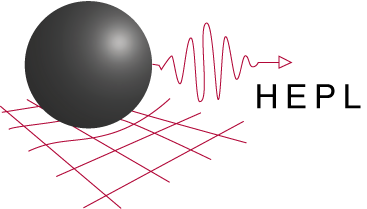News & Events
HEPL-KIPAC Seminar
Wednesday September 14, 2011
Nicholas Lockerbie
Gravitational Physics, SUPA (Scottish Universities Physics Alliance)
Department of Physics, University of Strathclyde, Glasgow, Scotland UK
High-precision displacement sensing (foreshadowing the future?)
Abstract: Careful study of simple sensors of linear displacement, in the form of optical shadow-sensors, has shown how these may be developed with greatly improved displacement sensitivity.
This talk examines the fundamentals of such sensors, and describes how a novel system of four shadow-sensors were constructed for intended use in Advanced LIGO (Laser Interferometer Gravitational wave Observatory). This system was aimed at the detection of 'Violin-Mode' resonances in the four fused-silica suspension fibres of a LIGO's test-masses/mirrors, and the sensors were found to have, collectively, a mean displacement sensitivity of (6.9 ± 1.3) × 1011m/Hz, (RMS) at the fibres' fundamental resonant frequency (500 Hz), over a measuring span of ~0.1 mm.
The issue of noise in these sensors is discussed, and in this context an example of low frequency (<= 10 Hz) 'beam wandering' noise from a related sensor (an OSEM: Optical Sensing ElectroMagnet) is given, together with how this noise may be reduced. Emphasis is also given in this talk to the reduction of higher frequency (1–100 kHz) noise in such shadow sensors, via the use of special electronic means:
- On the detection side via the 'bootstrapping' of photodiode sensors, to prevent noise-gain peaking in their transimpedance amplifiers
- On the emission side via noise cancellation in the current sources that are used to supply their LED-based sources of illumination; and, in order to reduce voltage regulator induced noise in both emitters and detectors, via 'noise finessing'.
An example is given of the detection using the above shadow-sensing system of a Violin-Mode free oscillation in an aLIGO suspension at MIT, at the level of 430 pm (RMS). A special prism which multiplies linear displacement 'noiselessly' by a factor of two is also described.
Bio: Not Available
Time: 4:00pm – 5:30pm
Location: Physics and Astrophysics Conference Room 102/103
Light refreshments available 4:00pm; Presentation begiins 4:15pm
Open to All


